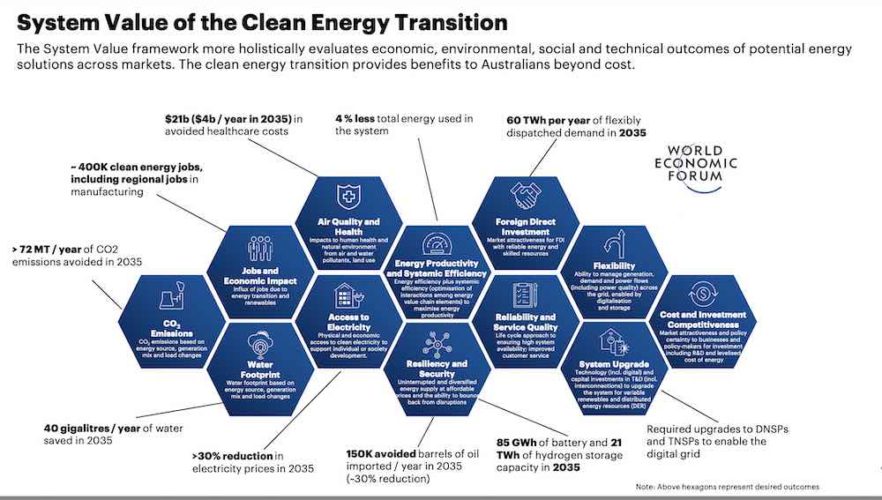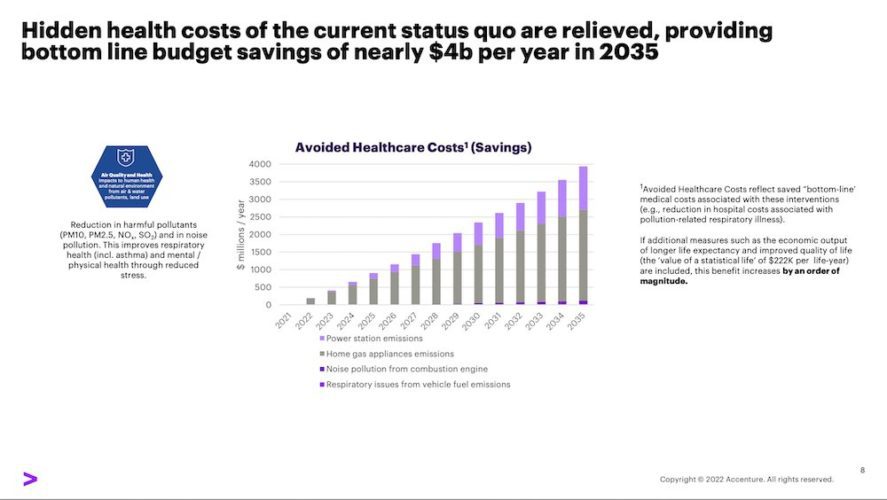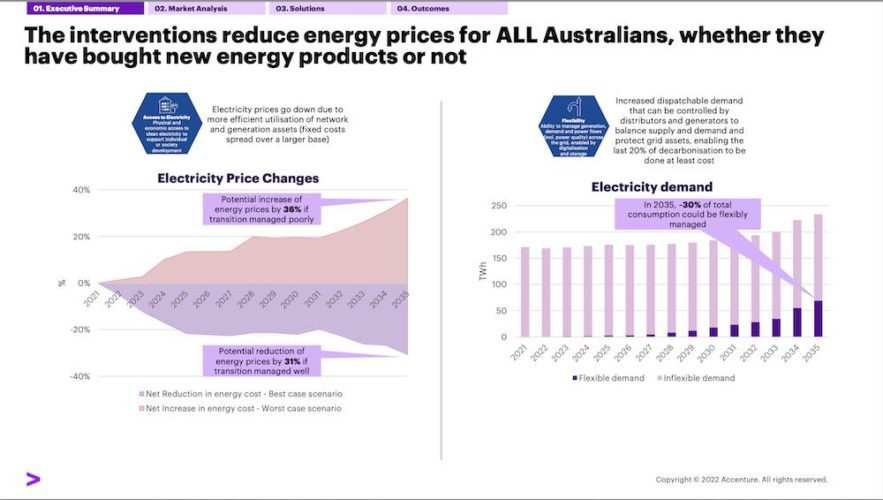How can we possibly power a modern economy with renewables? It’s an oft repeated question amplified by the fossil fuel industry. But the reality is that in a world largely powered by wind and solar, where most things are “electrified”, we won’t need as much energy.
This is not new news, but it’s worth repeating because it is often forgotten. A new report from Accenture, studying the proposed rapid shift to renewables in Australia over the next two decades, puts this into perspective.
It notes that despite a near 50 per cent increase in demand as the world shifts to electric vehicles and electric appliances in the home, total energy consumption will actually decline, because new technologies are vastly more efficient.
And, it adds, it’s not just energy we will be saving through the shift to wind, solar and storage, but money and health outcomes.
The fossil fuel economy is heating our climate, but it is also killing us, slowly, through pollution, and in our homes, at a cost of at least $4 billion a year in Australia alone, and likely much more. But we rarely talk about it.
The Accenture report is timely given the headlines about Australia’s renewable energy targets – at both national and state level – and a rebound in the fear-mongering that this rapid transition will be too hard, too complex and too expensive.
Accenture points out that Australia actually has the opportunity build an energy system that is more resilient and flexible, while empowering people to be both producers and consumers of energy, and to deliver multiple benefits in efficiency, costs, and health outcomes.

The headline numbers – based around the Australian Energy Market Operator’s Step Change scenario, which anticipates an 82 per cent share of renewables in the country main grid, are these:
+ More efficient use of electricity over fossil fuels will lead to 4% less energy used in 2035 than today, despite a 43 per cent increase in electricity demand.
+ Electricity prices could fall by 30 to 40 per cent, largely because use of “flexible loads” will allow for a more efficient use of grid and generation infrastructure.
+ Significant improvements in individual health outcomes, with a national saving of more than $4 billion per year from the cost of dealing with children’s asthma and other illnesses caused by the presence of fossil gas in our homes, fossil fuel generation and transport fumes.
+ And, of course, there are more jobs, particularly in regional areas. And increased energy security.
The more efficient use of energy is often forgotten in the debate around fossil fuels and renewables. Detractors of wind and solar often point to the small share of renewables in global energy production and wonder how these technologies can possibly replace fossil fuels.
What they often forget to say, and sometimes quite deliberately, is that most fossil fuel production is incredibly inefficient, with most of the energy lost and wasted as heat. That is true of coal generators and car engines in particular.
“Electricity is much more efficient in converting energy into useful energy,”, says Dominic Mendonca, who is the lead author of the report.
“That’s particularly the case of heat pumps, which create heat for industrial and commercial processes. And then, when you look at vehicles, the efficiency of internal combustion engines is around 15 per cent. EVs are in the order of 75 to 80 per cent.”
It means that while electrification will result in an increase in electricity use of around 43 per cent, overall energy use will fall by around 4 per cent, and that will help deliver the cost savings.
“The majority of the benefits that we modelled comes from increased use of the electricity system. If you can fill in the troughs of demand, increase the overall use of the grid, we can utilise generation and network assets a lot more efficiently, and that will lower the unit price of energy.
Accenture says the switch to renewables will mean a rapid scale-up of solar PV and battery storage in residential and commercial premises, a switch to EVs, fuel switching in homes and businesses from gas to electricity, and creating industrial clusters with ready access to renewable energy.
The use of flexible loads is an important consideration because it improves the efficiency of the system. Accenture estimates that around 30 per cent of total consumption could be flexibly managed.
The benefits are highlighted in the graph to the left. If properly managed, prices could fall by 31 per cent. If they are not, then prices could increase by 36 per cent.
“Sharing these benefits with consumers will empower Australians to become partners in the energy transition,” Mendonca says. “This is necessary because in order to re-build our energy system at least-cost, we need customer buy-in and involvement.”

The health impacts are particularly startling. Mendonca says the $4 billion a year in health cost savings is largely from eliminating the burning of gas in the home, which accounts for $2.6 billion as a result of reduced impacts on children, particularly asthma.
Another thing Accenture modelled is noise pollution benefit, particularly from the roll out of EVs and on sleep quality. This saving is estimated at some $68 million.
Deeper studies into the economic potential of people unaffected by fossil fuel pollution would deliver even more substantial benefits, but these are not quantified in this report.
For more details on energy losses from inefficient fossil fuel technologies, see also: Energy loss is single biggest component of today’s fossil-based electricity system












